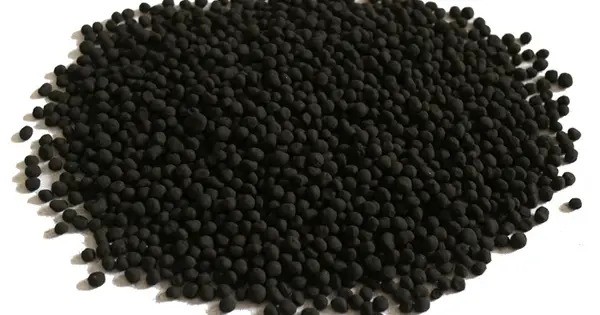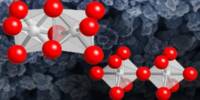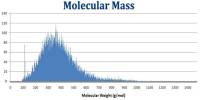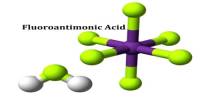Calcium cyanamide, also known as Calcium carbondiamide, Calcium cyan-2°-amide or Calcium cyanonitride is the inorganic compound with the formula CaCN2. It’s a grayish-white solid used primarily as a fertilizer and in various industrial chemical processes. It is the calcium salt of the cyanamide (CN2−2) anion.
This chemical is used as fertilizer and is commercially known as nitrolime. It also has herbicidal activity and in the 1950s was marketed as cyanamid. It was first synthesized in 1898 by Adolph Frank and Nikodem Caro (Frank–Caro process).
Properties
- Chemical formula: CaCN2
- Molar mass: 80.102 g/mol
- Appearance: White solid (Often gray or black from impurities)
- Odor: odorless
- Density: 2.29 g/cm3
- Melting point: 1,340 °C (2,440 °F; 1,610 K)
- Boiling point: 1,150 to 1,200 °C (2,100 to 2,190 °F; 1,420 to 1,470 K) (sublimes)
- Solubility in water: Reacts
Production
Calcium cyanamide is prepared from calcium carbide. The carbide powder is heated at about 1000 °C in an electric furnace into which nitrogen is passed for several hours. The product is cooled to ambient temperatures and any unreacted carbide is leached out cautiously with water.
CaC2 + N2 → CaCN2 + C (ΔHof = –69.0 kcal/mol at 25 °C)
It crystallizes in hexagonal crystal system with space group R3m and lattice constants a = 3.67 Å, c = 14.85 Å.
Industrially produced via the Frank–Caro process, where calcium carbide (CaC₂) reacts with nitrogen (N₂) at high temperatures (1,000–1,200°C):
𝐶𝑎𝐶2 + 𝑁2 → 𝐶𝑎𝐶𝑁2 + 𝐶
Occurrence
- Synthetic: Does not occur naturally; it is entirely synthetic.
- Found in industrial and agricultural settings.
- Occasionally present in soil after application as fertilizer.
Uses
The main use of calcium cyanamide is in agriculture as a fertilizer. In contact with water, it hydrolyses into hydrogen cyanamide which decomposes and liberates ammonia:
CaCN2 + 3 H2O → 2 NH3 + CaCO3
It was used to produce sodium cyanide by fusing with sodium carbonate:
CaCN2 + Na2CO3 + 2 C → 2 NaCN + CaO + 2 CO
Calcium cyanamide is also used as a wire-fed alloy in steelmaking to introduce nitrogen into the steel.
Safety
- The substance can cause alcohol intolerance, before or after the consumption of alcohol.
- Reacts with moisture to release ammonia and hydrogen cyanamide, which are toxic.
- Should be stored in a dry, well-ventilated area.
- Proper protective gear is necessary when handling it.
















